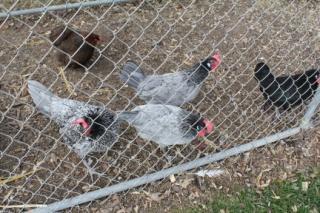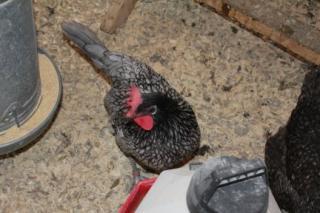Quote:
Yes, I was thinking to myself the problems that need worked on. The combs in the males. The combs on my females are decent. My old cock bird has a good chest on him and I am putting him in with the hens pictured here eventually. Right now the hens are with that cockerel. I think I saw it in your birds, (maybe not), but I also am having to be careful as white is showing up in the face on some of the birds and you have to select against that. Plus as you can see in the pictures, the tails on the females. They aren't supposed to have the two top curved tails feathers. That is a White Faced Black Spanish trait. I am also on the look out for stubs as some of the pullets that were hatched last year had good amounts of it. Eventually we'll get them up to standard, just takes time. My stock came from Fred Zillich. You may not have recognized my username, but I've emailed you before about Fred's rose comb buff leghorns and your buff minorca project.
Mine also are great layers of large white eggs and are good winter layers. I can say the same about their temperment. As chicks, quite flighty, but as they get older they are quite docile and they'll eat out of your hand, etc. I try to not hatch from pullet eggs as well as I only set eggs that are weighed and are large.
David
















